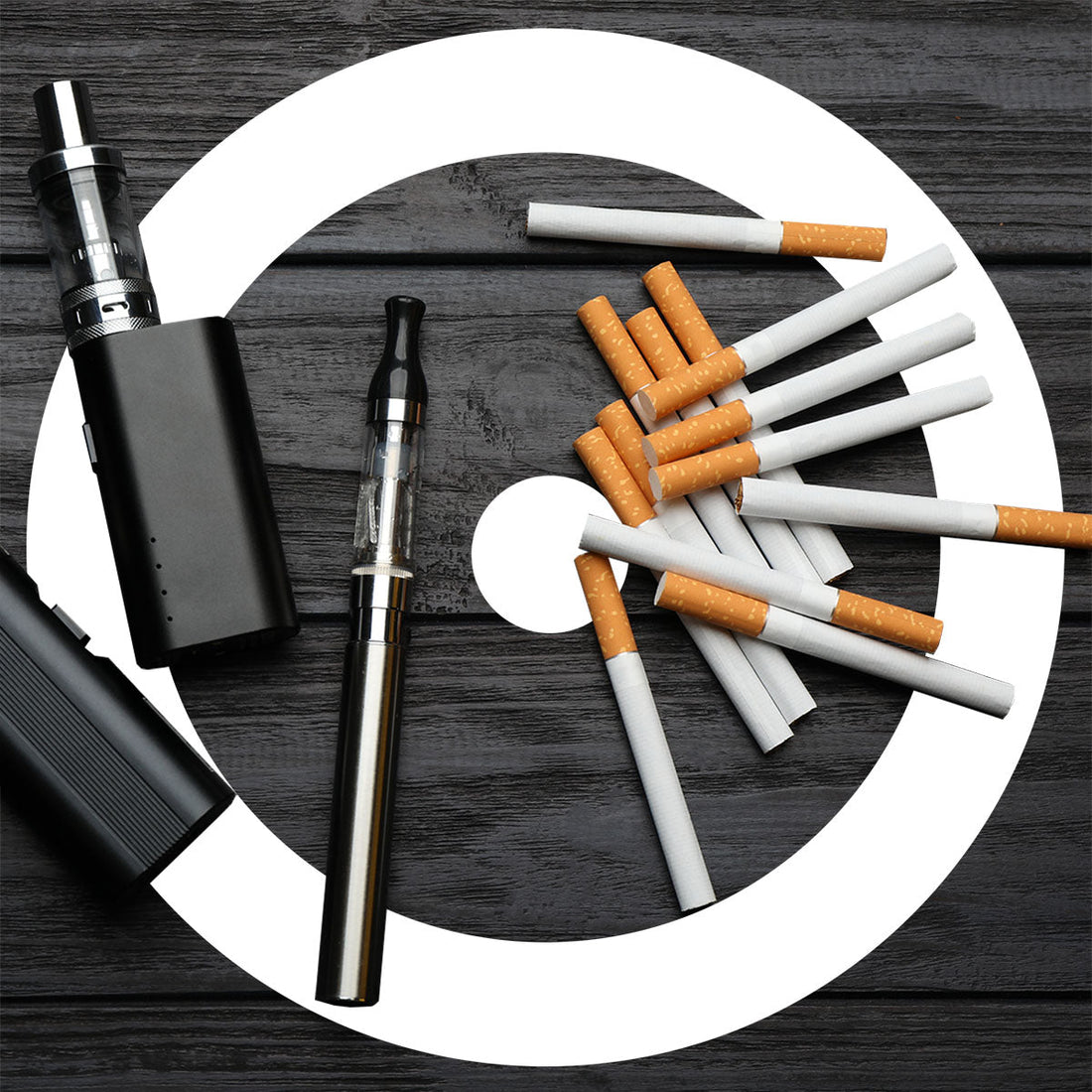Across the UK, millions of people have taken the difficult but rewarding step of quitting cigarettes. For many, vaping has played a key role in that journey. According to the Office for Health Improvement and Disparities (formerly Public Health England), vaping is much less harmful than smoking and one of the most effective tools available to help smokers quit.
But it’s important to be clear: vaping is not risk-free and should only be used by adult smokers who are trying to stop smoking. For those who have never smoked, there is no benefit to vaping — nicotine is an addictive substance that should be avoided unless used as a stop-smoking aid.
Why More Smokers Are Turning to Vaping
Quitting cigarettes is one of the hardest things a person can do. The physical addiction to nicotine is powerful, but the behavioural habit — the routine of lighting up, the hand-to-mouth motion, the break-time ritual — can be just as difficult to break.
That’s where vaping helps. It mimics the act of smoking while delivering nicotine without the harmful tar or toxic chemicals produced by burning tobacco. Many ex-smokers find that vaping not only satisfies their cravings but also replicates the familiar feel of smoking, making the switch easier.
Nicotine itself isn’t the main cause of smoking-related diseases; it’s the combustion — the burning of tobacco — that releases over 7,000 harmful chemicals. By removing combustion, vaping drastically reduces exposure to those toxins, which is why public health experts describe it as a harm reduction tool for smokers.

Sarah’s Story: From 20-a-Day to Vape-Free Living
Sarah, 38, from Manchester, started smoking in her late teens. By her thirties, she was on a pack a day and had tried nearly every quitting method — patches, gum, lozenges — with little success.
“It wasn’t just the nicotine,” she recalls. “It was the habit. I’d light up after meals, during stressful moments, or when I needed a break. Gum didn’t replace that feeling.”
A friend suggested she try vaping. Sarah began with a refillable vape pod kit and a 20mg nicotine salt e-liquid, which provided the same nicotine satisfaction but with a smoother inhale. Over time, she gradually reduced her nicotine strength to 10mg, then 5mg, and finally to zero.
“After six months, I realised I didn’t even want to vape anymore,” she says. “It wasn’t easy, but it was the first method that actually worked for me.”
The Science: Why Vaping Is Considered Less Harmful
Public Health England’s landmark review concluded that vaping is around 95% less harmful than smoking, a finding supported by several independent UK studies. The main reason is simple: no combustion, no tar, and significantly fewer toxic chemicals.
Cigarettes release carbon monoxide, tar, and thousands of toxins that damage the lungs, heart, and blood vessels. Vape liquids, by contrast, contain a few main ingredients — propylene glycol (PG), vegetable glycerine (VG), flavourings, and nicotine. While long-term health effects are still being studied, current evidence shows that vaping exposes users to far fewer harmful substances.
However, experts are clear that vaping should not be taken up by people who have never smoked. The NHS advises:
“If you don't smoke, don't start vaping.”
For smokers, though, switching to vaping can significantly reduce health risks and improve quality of life.
David’s Story: Finding Balance, Not Perfection
David, 52, from Bristol, smoked for over 30 years. He’d tried to quit multiple times, but the stress of work always brought him back to cigarettes.
When disposable vapes became more common, he decided to give them a try. “I liked that they were easy — no refilling or charging,” he says. “I went from 30 cigarettes a day to just one or two within a week.”
Eventually, David switched to a refillable pod kit, which was cheaper and more sustainable. He still uses nicotine salt vape pods, but his health has noticeably improved.
“I breathe easier, I don’t cough anymore, and food tastes better,” he says. “It’s not perfect — I’m still vaping — but I’m no longer smoking. For me, that’s a massive win.”

Common Questions from New Switchers
Is vaping cheaper than smoking?
Yes. The average smoker can save hundreds of pounds a year by switching to vaping, especially if they use refillable devices instead of disposables.
Can I quit nicotine completely with vaping?
Many people use vaping as a stepping stone. Once you’re comfortable, you can gradually reduce your nicotine strength until you reach zero.
Are disposable vapes a good way to start?
They’re simple and convenient for beginners but not ideal long-term. Refillable pod kits are more cost-effective and environmentally friendly.
What nicotine strength should I choose?
That depends on how much you currently smoke. Heavy smokers often start with 18–20mg nicotine salts, while light smokers may prefer 10mg or lower. Stop smoking services can help guide you.
Support for Smokers Who Want to Switch
If you’re thinking about switching, there’s plenty of support available across the UK. The NHS Stop Smoking Services and local “Vape to Quit” initiatives offer free guidance, starter kits, and personalised advice.
Combining professional support with vaping can double your chances of quitting successfully compared to going cold turkey. Remember: there’s no single right way to quit — it’s about finding what works for you.
Conclusion: Real People, Real Change
Vaping isn’t a lifestyle choice — it’s a harm reduction tool for adult smokers who want to quit cigarettes for good. For people like Sarah and David, it has been life-changing, helping them regain their health, confidence, and freedom from smoking.
If you smoke, switching to vaping could be a powerful step towards quitting. But if you’ve never smoked, there’s no reason to start.
Real stories. Real change. Real hope for a smoke-free UK.


